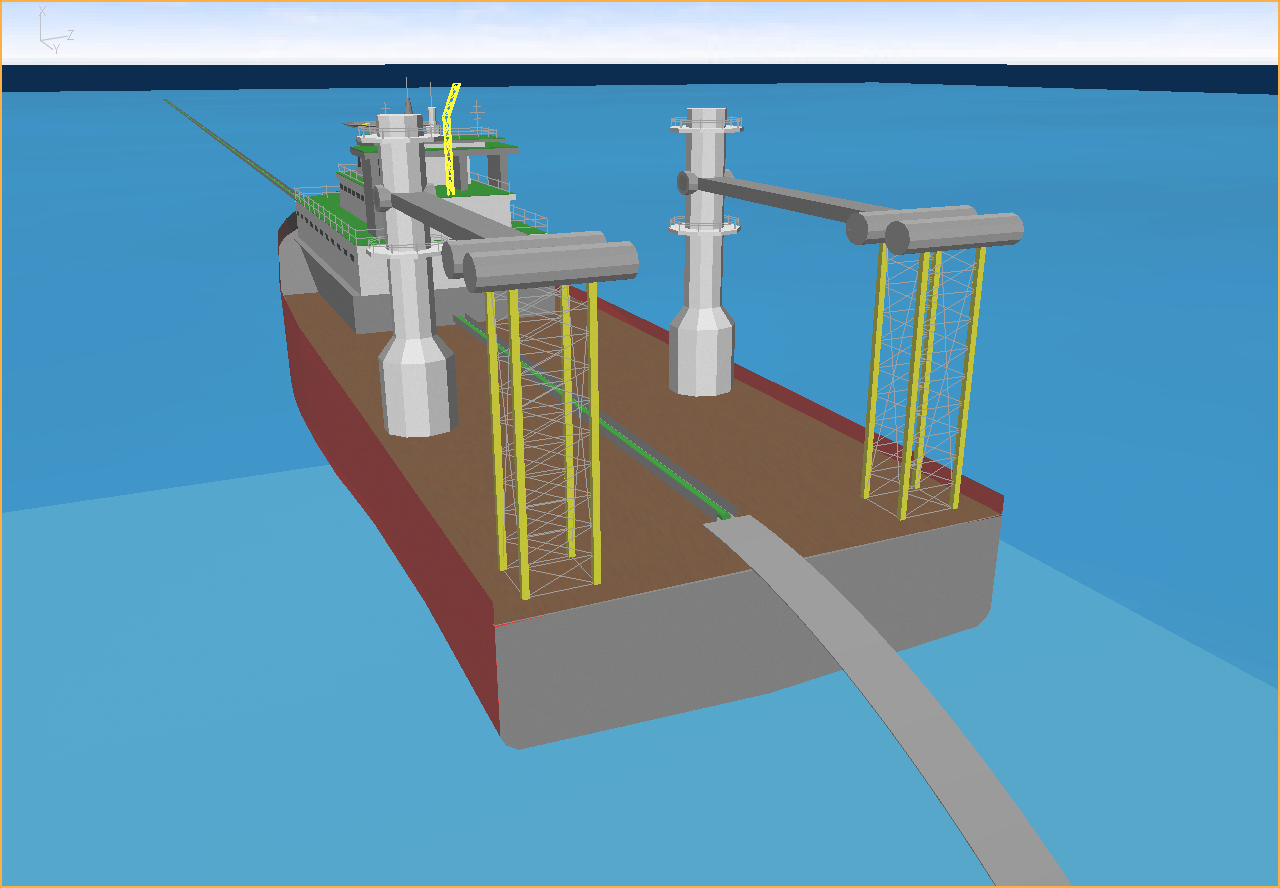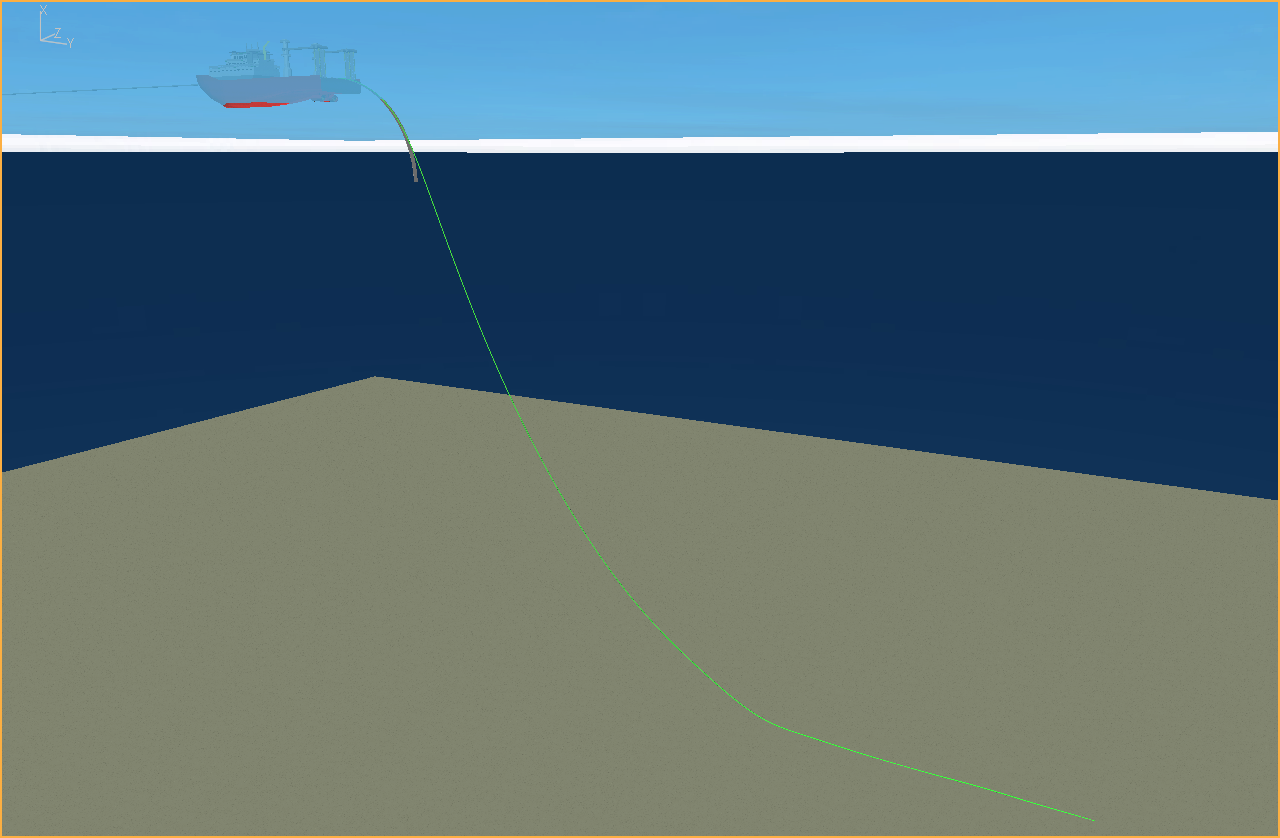The static configuration is established in the analysis file entitled Model. The pipe initial configuration is in its undeformed (straight) state and is supported by a flat guide surface which simulates the vessel deck level. The guide extends beyond the bow of the vessel in order to support the long length of pipe which will eventually be passed over the stinger. This approach facilitates modelling the pipe moving along the firing line in a straight undeformed state and then bending over the stinger which is the area of interest to the installation engineer.
The pipe is initially held along its length with boundary conditions in the vertical degree of freedom, which are subsequently released in the restart analysis entitled Contact to ensure a robust numerical solution.
The application of the plastic hardening model is achieved via the *PLASTIC HARDENING keyword. The stinger is modelled using a curved guide surface via *GUIDE, TYPE=CYLINDRICAL where the stinger radius of curvature is easily specified.

Initial Model Configuration - Pipe in Undeformed State
Once the static configuration is established the pipe is then incrementally payed out over the stinger in a series of 7 restart analyses. The first payout analysis uses a displacement boundary condition in the surge direction to pay the pipe over the stinger and lower it to the seabed. In the subsequent payout analyses, the pipe end is connected to the seabed with a boundary condition and the pipe is further lowered onto the seabed using a combination of vessel offsets in the negative surge direction and displacement boundary conditions.

Model Configuration after all Payout Analyses